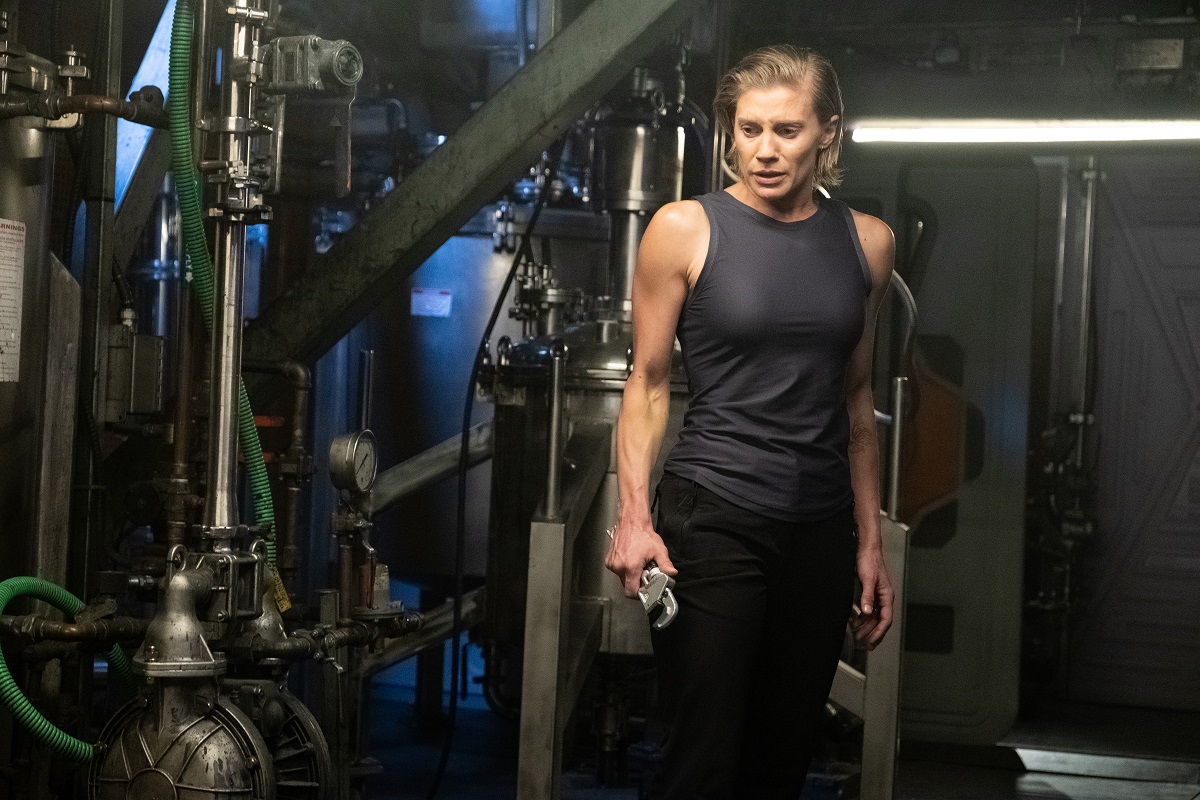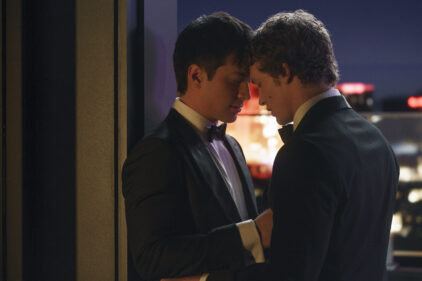Netflix’s “Another Life” sometimes feels like it’s trying to break a record for sci-fi fiction tropes. After watching four episodes, I’m not really sure that it isn’t the product of a team instructed to create sort of a genre mash-up. Think about it. Netflix’s biggest hit, “Stranger Things,” is a nostalgia hybrid of beloved ‘80s filmmaker and writers, why not try the same thing with a sci-fi show? People love “Alien,” “Arrival,” “Event Horizon,” “Solaris,” “Close Encounters of the Third Kind,” “Lost in Space” and “Battlestar Galactica” – they’ll love them all smashed together like a freeway pile-up! I didn’t.
“BSG” vet Katee Sackhoff goes back into space as “Another Life” lead Niko Breckinridge, the pilot of a ragtag and very carefully chosen to get every race and personality type crew. Niko, still dealing with the trauma of a recent spaceship disaster in which she had to sacrifice half her crew, is called into service when a mysterious silver alien ship lands on Earth in the not-too-distant future. Niko reluctantly leaves her husband Erik (Justin Chatwin) and young daughter (Lina Renna) to track the path of the unresponsive alien ship back to its home planet, while Erik stays on Earth to figure out what the silent visitors want. Of course, Niko’s mission is not without its interstellar speedbumps.
Actually, they could have called this show “Niko’s Horrible Space Journey” as each episode revolves around another problem on her ship. The premiere features the mutiny trope, in which an outspoken, male crew member (Tyler Hoechlin) threatens Niko’s leadership. Over just the next few episodes, we have a journey to a planet that may be deadly, an illness that threatens the crew, a possible alien parasite crisis, and more. The constant-threat approach to storytelling means “Another Life” has a complete lack of character development within Niko’s crew because they’re too busy worrying and yelling. It sometimes felt like the producers were just tossing in extras to the group to see if I would notice. None of them are allowed any personality with the small exception of William (Samuel Anderson), who is sort of the “android/mother” character—an andromorphic version of the ship’s operating system. Everyone else feels like a lost group of models who wandered on to the wrong set.

The lack of depth in “Another Life” leaves a lot of weight on Sackhoff’s shoulders. She’s forced through a gauntlet of emotions in the four episodes I’ve seen, and mostly comes out okay, although she falls victim to the weak writing too, as any actress would. However, she endures the tropes more successfully than Chatwin on the ground. The show sinks every time it returns home to his subplot involving communicating with the spaceship and actively worrying about his wife, although a tabloid queen played by Selma Blair adds a little bit of energy to the story.
Blair and Sackhoff are always welcome presences on any show, and it’s telling how much the four episodes of “Another Life” that I could stomach simply annoyed me. While “Stranger Things” undeniably takes inspiration from other places, it blends them into something confidently new. The elements of “Another Life” just sit there, often in opposition to each other – the tonal shifts between Niko’s ship and her husband on Earth are jarring enough to make you think you accidentally started another show. You’d be better off if you did.
Four episodes screened for review.












